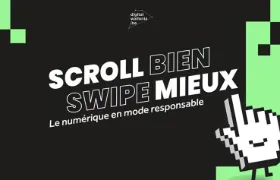Technobel and Proximus develop a unique training track for splicers
Making a career choice is not always an easy task. It starts with the choice of study in secondary school or higher education. Which direction do I want to go later? What training should I follow to subsequently find a job that suits me? What job will I feel good in?
Once you have completed your studies, the search on the complex labor market begins. A labor market where there is a lot of competition for certain occupations while employers are unable to fill some critical positions because there are not enough or no suitable candidates.
Jobseekers also have to deal with the fact that the competencies built up in the past or in previous jobs are no longer sufficient for the jobs of the future. Everything is becoming digital and IT and technical profiles are high on the wish list of companies. One of those is the profession of splicer.
Splicer: a professional shortage area
To manage the digital revolution, telecom companies are investing heavily in the digital infrastructure and a lot of people are needed to build and maintain it. In recent years, therefore, the profession of splicer has become much sought-after.
Proximus' ambition is to build the best gigabit network by 2022 and is constantly recruiting splicers for its copper and optical fiber network. Filling these positions is not always easy. The gap between the requirements in the field and the content of existing training courses is often large and applicants usually have little or no concrete experience in the job which makes them difficult to deploy in the short term.
This is why Proximus, together with Technobel, has developed a unique training track based on the principle of Dual Learning.
Dual Learning, a winning combination of training and working life
Dual learning or alternating learning is a combination of theoretical training and extensive practical training.
In December 2019, Proximus, Technobel and the Forem for the first time started a specific training track for splicers according to this principle. After an initial selection procedure to gauge motivation, six candidates were selected to follow the training. For four months, the "prospective splicers" followed a combination of theoretical lessons, practical exercises in the Proximus workshops and went on-site with experienced splicers. After these four months they proudly received the certificate "Certified copper splicer". Meanwhile, three of these people are already permanently employed by Proximus.
I didn't have any experience as a splicer when I started this training track, but it was a job that appealed to me," he says. "It was very interesting experience for me. I was able to put the theory lessons into practice immediately and I had a permanent mentor who was always there for me to guide me and answer all my questions. I followed the training to work on the copper network but soon I will have the opportunity to follow internal training to be able to work on the optical fiber network
Technobel and Proximus: indispensable synergies
This project has clearly demonstrated that the "Dual Learning" approach works and that the people who complete the training can immediately start working for an employer and have very strong assets in the labor market. So this will undoubtedly be continued.
The collaboration between Proximus and Technobel offers many advantages.
Technobel's model shows how indispensable the synergies between the world of training and the world of work are. The interaction between Proximus and Technobel helps us respond to the need for certain profiles, but it is also of the utmost importance for Proximus, as a major economic player in Belgium, to help meet the retraining challenges of the Belgian economy and ensure that the digital jobs of the future are filled.


